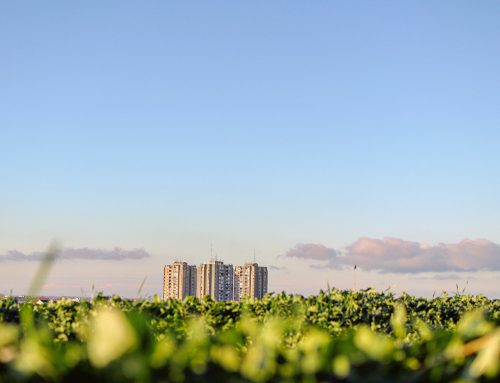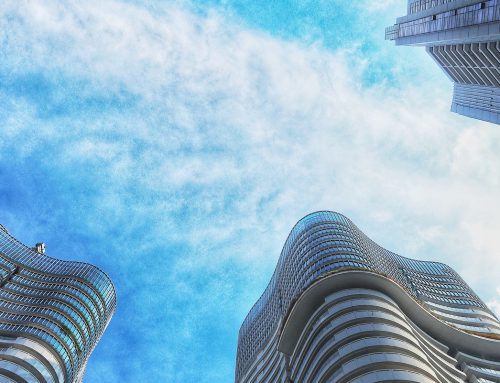A hands on approach with developers ensures ENS guidelines are integrated into new affordable housing projects
 India is heating up and with soaring temperatures comes a problem that building developers cannot ignore, according to local builder, Anjanee Patel, from Ahmedabad developers Aryanparv Realty LLP. She said taking a sustainable and environmental focus for new builds was essential.
India is heating up and with soaring temperatures comes a problem that building developers cannot ignore, according to local builder, Anjanee Patel, from Ahmedabad developers Aryanparv Realty LLP. She said taking a sustainable and environmental focus for new builds was essential.
“The problem is so bad. Thermal comfort for residents is the utmost priority, considering we have summer for almost eight months of the year now,” Ms Patel said.
“If we can bring down the cooling costs for affordable home residents, I think it will really make a difference. That electricity bill really matters to them, more than almost anybody else.”
GBPN worked with local experts Environmental Design Solutions (EDS) to develop a plan that would bring developers on the journey in a pragmatic way. They held a series of Design Charrettes with Gujarat and Maharashtra residential developers to demonstrate simple ways to edit their designs and make them more sustainable. The goal was to increase compliance with the energy conservation building code Eco Niwas Samhita (ENS) for affordable housing in the two states.
Two-pronged approach to ENS auditing for developers
The design charrettes were held with the developers, architects and owners of ten shortlisted residential projects.
The first design charrette focused on building materials and the second charrette gave guidance on technology and design to help the developers meet ENS standards.
 GBPN Senior Advisor, India, Guaram Nagar said the events had been very well received by participants because they were practical and showed just how easy it was to achieve ENS compliance with simple design modifications.
GBPN Senior Advisor, India, Guaram Nagar said the events had been very well received by participants because they were practical and showed just how easy it was to achieve ENS compliance with simple design modifications.
“We rolled out design charrettes with ten developers and showed them how to achieve compliance using a combination of passive architectural measures and efficient building materials,” he said.
“We received excellent feedback from participants with the majority of them indicating they intended to improve the ENS compliance in their designs. We are now looking at rolling out the concept to other parts of India.”
After participating in the program, each developer was given a detailed report on modifications required to meet ENS compliance and an energy monitoring framework.
“I’m really looking forward to the ENS rolling out throughout India as just having these basic measures required in every building will ensure it becomes easy for developers to integrate so that it can happen at a larger scale and have a greater impact,” Ms Patel said.
“As a young environmental engineer, programs like these are very encouraging and I am excited for our country’s future progress in the direction of sustainable housing.”
Anjanee Patel, Ahdemabad developer
Affordable housing projects on the right path for residents and the environment
Being an engineer for a company that is actively working towards greener choices in their work, Ms Patel said that low to zero cost changes – both for developers and residents – would make any adjustments required for an India-wide roll out of the ENS that much easier.
“Since it’s an affordable housing project, we want to make sure that the cost per apartment is really low,” Ms Patel said.

“So you’re already being very efficient with your design, your material usage and everything else; you’re not wasting anything and you’re not being extravagant. It’s what’s essential.”
However, she said that the changes required to be ENS compliant were extremely minimal and were easily implemented with attention to detail.
According to Dr Peter Graham, Executive Director of GBPN and Associate Professor at Monash University MADA, the objective of the charrettes was to create realistic and achievable designs that would practically work to transition from conventional practices to a more sustainable approach.
“The gap between a conventional design and an ENS compliant design is relatively small but the impact on carbon emissions in the long term can be significant,” Dr Graham said.
“Our goal with this activity was to demonstrate that it’s not difficult to build more sustainably and it’s not expensive to build more sustainably, it just requires thinking differently at the design stage.”
Through the program over 4000 dwellings have been assessed for ENS compliance. This ensures better daylight access, cross ventilation and lower heat gains, resulting in 384kg CO2 per day saved by these interventions.
ENS and design charrettes offer worthwhile learning
Participating developers felt that the design charrette method of working through ENS compliance was a simple and direct way to make sure the policy could be rolled out on a larger scale.
“The entire project team and I learnt a lot during the design charrette process,” Ms Patel.
“The EDS team were very proactive and available to answer all of our questions.”
GBPN Senior Advisor, India, Guaram Nagar said that good policy is only effective if it is possible to implement it effectively.
“By participating in these collaborative design charrettes with the builders and developers working directly on affordable housing projects, we have been able to show where specific changes to their designs could have a positive impact on both the sustainability of the buildings and the comfort of the occupants,” said Mr Nagar.
| Project Name: Enabling private sector engagement with Eco-Niwas Samhita (ENS) compliance | |
|---|---|
| Goal: | The project provided design assistance to 10 housing projects in Gujarat and Maharashtra for ENS compliance by adopting a combination of passive architectural measures and the use of efficient building materials & technologies. The project was able to provide compliance with ENS 2018 and 2021 for each selected project through detailed design charrettes and also technical capacity building for implementation of ENS complied housing project. |
| Funded by: |  |
| Duration: | March 2021 – Nov 2021 (8 months) |
| Location: | Ahmedabad, Gujarat, Mumbai, Maharashtra, India |
| Level of Government: | Local & State |
| Reports and Links: | |
| Government Partner/s: | None |
| Research Partner: | Environmental Design Solutions (EDS) |
| Implementation Partner/s: | Aarambh Housing, Ahmedabad Icon Architects, Ahmedabad Kumar Parv, Pune |
| Advocacy Allies: | None |
| GBPN Experts: | Tanmay Tathagat Dipti Arora Mohit Verma Amrita Ranjan |
| Related Project/s: | This project builds onto the findings of ENS related projects done by CEPT and AEEE. The need of this project was to support the private players in adoption of ENS while designing & constructing ENS compliant affordable homes in Gujarat and Maharasthra (states of India) |





